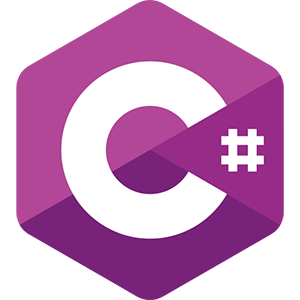microsoft / phi-4
phi-4
PHI-4 by Microsoft is an advanced large language model designed for precise natural language understanding and generation. It offers robust performance in compl...
API Sample: microsoft/phi-4
📚 For LLM Integration:
For complete parameter details and examples, please also review the markdown documentation at:
/models/microsoft/phi-4/llms.txt
/models/microsoft/phi-4/llms-full.txt
You don't have any projects yet. To be able to use our api service effectively, please sign in/up and create a project.
Get your api keyPrepare Authentication (Signature)
//Sign up Wiro dashboard and create project
export YOUR_API_KEY="YOUR_WIRO_API_KEY";
export YOUR_API_SECRET="XXXXXXXXX";
//unix time or any random integer value
export NONCE=$(date +%s);
//hmac-SHA256 (YOUR_API_SECRET+Nonce) with YOUR_API_KEY
export SIGNATURE="$(echo -n "${YOUR_API_SECRET}${NONCE}" | openssl dgst -sha256 -hmac "${YOUR_API_KEY}")";
Create a New Folder - Make HTTP Post Request
Create a New Folder - Response
Upload a File to the Folder - Make HTTP Post Request
Upload a File to the Folder - Response
Run Command - Make HTTP Post Request (JSON)
# ⚠️ IMPORTANT: Remove all commented lines (starting with #) before running
# Bash doesn't support comments in command continuation (lines ending with \)
curl -X POST "https://api.wiro.ai/v1/Run/microsoft/phi-4" \
-H "Content-Type: application/json" \
-H "x-api-key: ${YOUR_API_KEY}" \
-H "x-nonce: ${NONCE}" \
-H "x-signature: ${SIGNATURE}" \
-d '{
"prompt": "What are some interesting historical events that took place near the Tower of London, and how could they inspire a fictional story?",
"user_id": "/* user_id value */",
"session_id": "/* session_id value */",
"system_prompt": "You are a helpful, respectful and honest assistant. Always answer as helpfully as possible, while being safe. Your answers should not include any harmful, unethical, racist, sexist, toxic, dangerous, or illegal content. Please ensure that your responses are socially unbiased and positive in nature. \nIf a question does not make any sense, or is not factually coherent, explain why instead of answering something not correct. If you don't know the answer to a question, please don't share false information.",
"temperature": "0.7",
"top_p": "0.95",
"top_k": "0",
"repetition_penalty": "1.0",
"length_penalty": "1",
"max_tokens": "0",
"min_tokens": "0",
"max_new_tokens": "0",
"min_new_tokens": "-1",
"stop_sequences": "/* stop_sequences value */",
"seed": "1085857",
"quantization": "--quantization",
"do_sample": "--do_sample",
"callbackUrl": "Optional: Webhook URL for task completion notifications"
}';
Run Command - Response
//response body
{
"errors": [],
"taskid": "2221",
"socketaccesstoken": "eDcCm5yyUfIvMFspTwww49OUfgXkQt",
"result": true
}
Get Task Detail - Make HTTP Post Request with Task Token
curl -X POST "https://api.wiro.ai/v1/Task/Detail" \
-H "Content-Type: application/json" \
-H "x-api-key: ${YOUR_API_KEY}" \
-H "x-nonce: ${NONCE}" \
-H "x-signature: ${SIGNATURE}" \
-d '{
"tasktoken": "eDcCm5yyUfIvMFspTwww49OUfgXkQt"
}';
Get Task Detail - Response
//response body
{
"total": "1",
"errors": [],
"tasklist": [
{
"id": "534574",
"uuid": "15bce51f-442f-4f44-a71d-13c6374a62bd",
"name": "",
"socketaccesstoken": "eDcCm5yyUfIvMFspTwww49OUfgXkQt",
"parameters": {
"inputImage": "https://api.wiro.ai/v1/File/mCmUXgZLG1FNjjjwmbtPFr2LVJA112/inputImage-6060136.png"
},
"debugoutput": "",
"debugerror": "",
"starttime": "1734513809",
"endtime": "1734513813",
"elapsedseconds": "6.0000",
"status": "task_postprocess_end",
"cps": "0.000585000000",
"totalcost": "0.003510000000",
"guestid": null,
"projectid": "699",
"modelid": "598",
"description": "",
"basemodelid": "0",
"runtype": "model",
"modelfolderid": "",
"modelfileid": "",
"callbackurl": "",
"marketplaceid": null,
"createtime": "1734513807",
"canceltime": "0",
"assigntime": "1734513807",
"accepttime": "1734513807",
"preprocessstarttime": "1734513807",
"preprocessendtime": "1734513807",
"postprocessstarttime": "1734513813",
"postprocessendtime": "1734513814",
"pexit": "0",
"categories": "["tool","image-to-image","quick-showcase","compare-landscape"]",
"outputs": [
{
"id": "6bc392c93856dfce3a7d1b4261e15af3",
"name": "0.png",
"contenttype": "image/png",
"parentid": "6c1833f39da71e6175bf292b18779baf",
"uuid": "15bce51f-442f-4f44-a71d-13c6374a62bd",
"size": "202472",
"addedtime": "1734513812",
"modifiedtime": "1734513812",
"accesskey": "dFKlMApaSgMeHKsJyaDeKrefcHahUK",
"foldercount": "0",
"filecount": "0",
"ispublic": 0,
"expiretime": null,
"url": "https://cdn1.wiro.ai/6a6af820-c5050aee-40bd7b83-a2e186c6-7f61f7da-3894e49c-fc0eeb66-9b500fe2/0.png"
}
],
"size": "202472"
}
],
"result": true
}
Kill Task - Make HTTP Post Request with Task ID
curl -X POST "https://api.wiro.ai/v1/Task/Kill" \
-H "Content-Type: application/json" \
-H "x-api-key: ${YOUR_API_KEY}" \
-H "x-nonce: ${NONCE}" \
-H "x-signature: ${SIGNATURE}" \
-d '{
"taskid": "534574"
}';
Kill Task - Response
//response body
{
"errors": [],
"tasklist": [
{
"id": "534574",
"uuid": "15bce51f-442f-4f44-a71d-13c6374a62bd",
"name": "",
"socketaccesstoken": "ZpYote30on42O4jjHXNiKmrWAZqbRE",
"parameters": {
"inputImage": "https://api.wiro.ai/v1/File/mCmUXgZLG1FNjjjwmbtPFr2LVJA112/inputImage-6060136.png"
},
"debugoutput": "",
"debugerror": "",
"starttime": "1734513809",
"endtime": "1734513813",
"elapsedseconds": "6.0000",
"status": "task_cancel",
"cps": "0.000585000000",
"totalcost": "0.003510000000",
"guestid": null,
"projectid": "699",
"modelid": "598",
"description": "",
"basemodelid": "0",
"runtype": "model",
"modelfolderid": "",
"modelfileid": "",
"callbackurl": "",
"marketplaceid": null,
"createtime": "1734513807",
"canceltime": "0",
"assigntime": "1734513807",
"accepttime": "1734513807",
"preprocessstarttime": "1734513807",
"preprocessendtime": "1734513807",
"postprocessstarttime": "1734513813",
"postprocessendtime": "1734513814",
"pexit": "0",
"categories": "["tool","image-to-image","quick-showcase","compare-landscape"]",
"outputs": [
{
"id": "6bc392c93856dfce3a7d1b4261e15af3",
"name": "0.png",
"contenttype": "image/png",
"parentid": "6c1833f39da71e6175bf292b18779baf",
"uuid": "15bce51f-442f-4f44-a71d-13c6374a62bd",
"size": "202472",
"addedtime": "1734513812",
"modifiedtime": "1734513812",
"accesskey": "dFKlMApaSgMeHKsJyaDeKrefcHahUK",
"foldercount": "0",
"filecount": "0",
"ispublic": 0,
"expiretime": null,
"url": "https://cdn1.wiro.ai/6a6af820-c5050aee-40bd7b83-a2e186c6-7f61f7da-3894e49c-fc0eeb66-9b500fe2/0.png"
}
],
"size": "202472"
}
],
"result": true
}
Cancel Task - Make HTTP Post Request (For tasks on queue)
curl -X POST "https://api.wiro.ai/v1/Task/Cancel" \
-H "Content-Type: application/json" \
-H "x-api-key: ${YOUR_API_KEY}" \
-H "x-nonce: ${NONCE}" \
-H "x-signature: ${SIGNATURE}" \
-d '{
"taskid": "634574"
}';
Cancel Task - Response
//response body
{
"errors": [],
"tasklist": [
{
"id": "634574",
"uuid": "15bce51f-442f-4f44-a71d-13c6374a62bd",
"name": "",
"socketaccesstoken": "ZpYote30on42O4jjHXNiKmrWAZqbRE",
"parameters": {
"inputImage": "https://api.wiro.ai/v1/File/mCmUXgZLG1FNjjjwmbtPFr2LVJA112/inputImage-6060136.png"
},
"debugoutput": "",
"debugerror": "",
"starttime": "1734513809",
"endtime": "1734513813",
"elapsedseconds": "6.0000",
"status": "task_cancel",
"cps": "0.000585000000",
"totalcost": "0.003510000000",
"guestid": null,
"projectid": "699",
"modelid": "598",
"description": "",
"basemodelid": "0",
"runtype": "model",
"modelfolderid": "",
"modelfileid": "",
"callbackurl": "",
"marketplaceid": null,
"createtime": "1734513807",
"canceltime": "0",
"assigntime": "1734513807",
"accepttime": "1734513807",
"preprocessstarttime": "1734513807",
"preprocessendtime": "1734513807",
"postprocessstarttime": "1734513813",
"postprocessendtime": "1734513814",
"pexit": "0",
"categories": "["tool","image-to-image","quick-showcase","compare-landscape"]",
"outputs": [
{
"id": "6bc392c93856dfce3a7d1b4261e15af3",
"name": "0.png",
"contenttype": "image/png",
"parentid": "6c1833f39da71e6175bf292b18779baf",
"uuid": "15bce51f-442f-4f44-a71d-13c6374a62bd",
"size": "202472",
"addedtime": "1734513812",
"modifiedtime": "1734513812",
"accesskey": "dFKlMApaSgMeHKsJyaDeKrefcHahUK",
"foldercount": "0",
"filecount": "0",
"ispublic": 0,
"expiretime": null,
"url": "https://cdn1.wiro.ai/6a6af820-c5050aee-40bd7b83-a2e186c6-7f61f7da-3894e49c-fc0eeb66-9b500fe2/0.png"
}
],
"size": "202472"
}
],
"result": true
}
Get Task Process Information and Results with Socket Connection
<script type="text/javascript">
window.addEventListener('load',function() {
//Get socketAccessToken from task run response
var SocketAccessToken = 'eDcCm5yyUfIvMFspTwww49OUfgXkQt';
WebSocketConnect(SocketAccessToken);
});
//Connect socket with connection id and register task socket token
async function WebSocketConnect(accessTokenFromAPI) {
if ("WebSocket" in window) {
var ws = new WebSocket("wss://socket.wiro.ai/v1");
ws.onopen = function() {
//Register task socket token which has been obtained from task run API response
ws.send('{"type": "task_info", "tasktoken": "' + accessTokenFromAPI + '"}');
};
ws.onmessage = function (evt) {
var msg = evt.data;
try {
var debugHtml = document.getElementById('debug');
debugHtml.innerHTML = debugHtml.innerHTML + "\n" + msg;
var msgJSON = JSON.parse(msg);
console.log('msgJSON: ', msgJSON);
if(msgJSON.type != undefined)
{
console.log('msgJSON.target: ',msgJSON.target);
switch(msgJSON.type) {
case 'task_queue':
console.log('Your task has been waiting in the queue.');
break;
case 'task_accept':
console.log('Your task has been accepted by the worker.');
break;
case 'task_preprocess_start':
console.log('Your task preprocess has been started.');
break;
case 'task_preprocess_end':
console.log('Your task preprocess has been ended.');
break;
case 'task_assign':
console.log('Your task has been assigned GPU and waiting in the queue.');
break;
case 'task_start':
console.log('Your task has been started.');
break;
case 'task_output':
console.log('Your task has been started and printing output log.');
console.log('Log: ', msgJSON.message);
break;
case 'task_error':
console.log('Your task has been started and printing error log.');
console.log('Log: ', msgJSON.message);
break;
case 'task_output_full':
console.log('Your task has been completed and printing full output log.');
break;
case 'task_error_full':
console.log('Your task has been completed and printing full error log.');
break;
case 'task_end':
console.log('Your task has been completed.');
break;
case 'task_postprocess_start':
console.log('Your task postprocess has been started.');
break;
case 'task_postprocess_end':
console.log('Your task postprocess has been completed.');
console.log('Outputs: ', msgJSON.message);
//output files will add ui
msgJSON.message.forEach(function(currentValue, index, arr){
console.log(currentValue);
var filesHtml = document.getElementById('files');
filesHtml.innerHTML = filesHtml.innerHTML + '<img src="' + currentValue.url + '" style="height:300px;">'
});
break;
}
}
} catch (e) {
console.log('e: ', e);
console.log('msg: ', msg);
}
};
ws.onclose = function() {
alert("Connection is closed...");
};
} else {
alert("WebSocket NOT supported by your Browser!");
}
}
</script>
Prepare UI Elements Inside Body Tag
<div id="files"></div>
<pre id="debug"></pre>
Phi-4 Model Card
Model Summary
| Developers | Microsoft Research |
| Description | phi-4 is a state-of-the-art open model built upon a blend of synthetic datasets, data from filtered public domain websites, and acquired academic books and Q&A datasets. The goal of this approach was to ensure that small capable models were trained with data focused on high quality and advanced reasoning.phi-4 underwent a rigorous enhancement and alignment process, incorporating both supervised fine-tuning and direct preference optimization to ensure precise instruction adherence and robust safety measures |
| Architecture | 14B parameters, dense decoder-only Transformer model |
| Inputs | Text, best suited for prompts in the chat format |
| Context length | 16K tokens |
| GPUs | 1920 H100-80G |
| Training time | 21 days |
| Training data | 9.8T tokens |
| Outputs | Generated text in response to input |
| Dates | October 2024 – November 2024 |
| Status | Static model trained on an offline dataset with cutoff dates of June 2024 and earlier for publicly available data |
| Release date | December 12, 2024 |
| License | MIT |
Intended Use
| Primary Use Cases | Our model is designed to accelerate research on language models, for use as a building block for generative AI powered features. It provides uses for general purpose AI systems and applications (primarily in English) which require: 1. Memory/compute constrained environments. 2. Latency bound scenarios. 3. Reasoning and logic. |
| Out-of-Scope Use Cases | Our models is not specifically designed or evaluated for all downstream purposes, thus: 1. Developers should consider common limitations of language models as they select use cases, and evaluate and mitigate for accuracy, safety, and fairness before using within a specific downstream use case, particularly for high-risk scenarios. 2. Developers should be aware of and adhere to applicable laws or regulations (including privacy, trade compliance laws, etc.) that are relevant to their use case, including the model’s focus on English. 3. Nothing contained in this Model Card should be interpreted as or deemed a restriction or modification to the license the model is released under. |
Data Overview
Training Datasets
Our training data is an extension of the data used for Phi-3 and includes a wide variety of sources from:
Publicly available documents filtered rigorously for quality, selected high-quality educational data, and code.
Newly created synthetic, “textbook-like” data for the purpose of teaching math, coding, common sense reasoning, general knowledge of the world (science, daily activities, theory of mind, etc.).
Acquired academic books and Q&A datasets.
High quality chat format supervised data covering various topics to reflect human preferences on different aspects such as instruct-following, truthfulness, honesty and helpfulness.
Multilingual data constitutes about 8% of our overall data. We are focusing on the quality of data that could potentially improve the reasoning ability for the model, and we filter the publicly available documents to contain the correct level of knowledge.
Benchmark datasets
We evaluated phi-4 using OpenAI’s SimpleEval and our own internal benchmarks to understand the model’s capabilities, more specifically:
MMLU: Popular aggregated dataset for multitask language understanding.
MATH: Challenging competition math problems.
GPQA: Complex, graduate-level science questions.
DROP: Complex comprehension and reasoning.
MGSM: Multi-lingual grade-school math.
HumanEval: Functional code generation.
SimpleQA: Factual responses.
Safety
Approach
phi-4 has adopted a robust safety post-training approach. This approach leverages a variety of both open-source and in-house generated synthetic datasets. The overall technique employed to do the safety alignment is a combination of SFT (Supervised Fine-Tuning) and iterative DPO (Direct Preference Optimization), including publicly available datasets focusing on helpfulness and harmlessness as well as various questions and answers targeted to multiple safety categories.
Safety Evaluation and Red-Teaming
Prior to release, phi-4 followed a multi-faceted evaluation approach. Quantitative evaluation was conducted with multiple open-source safety benchmarks and in-house tools utilizing adversarial conversation simulation. For qualitative safety evaluation, we collaborated with the independent AI Red Team (AIRT) at Microsoft to assess safety risks posed by phi-4 in both average and adversarial user scenarios. In the average user scenario, AIRT emulated typical single-turn and multi-turn interactions to identify potentially risky behaviors. The adversarial user scenario tested a wide range of techniques aimed at intentionally subverting the model’s safety training including jailbreaks, encoding-based attacks, multi-turn attacks, and adversarial suffix attacks.
Please refer to the technical report for more details on safety alignment.
Model Quality
To understand the capabilities, we compare phi-4 with a set of models over OpenAI’s SimpleEval benchmark.
At the high-level overview of the model quality on representative benchmarks. For the table below, higher numbers indicate better performance:
| Category | Benchmark | phi-4 (14B) | phi-3 (14B) | Qwen 2.5 (14B instruct) | GPT-4o-mini | Llama-3.3 (70B instruct) | Qwen 2.5 (72B instruct) | GPT-4o |
|---|---|---|---|---|---|---|---|---|
| Popular Aggregated Benchmark | MMLU | 84.8 | 77.9 | 79.9 | 81.8 | 86.3 | 85.3 | 88.1 |
| Science | GPQA | 56.1 | 31.2 | 42.9 | 40.9 | 49.1 | 49.0 | 50.6 |
| Math | MGSM MATH | 80.6 80.4 | 53.5 44.6 | 79.6 75.6 | 86.5 73.0 | 89.1 66.3* | 87.3 80.0 | 90.4 74.6 |
| Code Generation | HumanEval | 82.6 | 67.8 | 72.1 | 86.2 | 78.9* | 80.4 | 90.6 |
| Factual Knowledge | SimpleQA | 3.0 | 7.6 | 5.4 | 9.9 | 20.9 | 10.2 | 39.4 |
| Reasoning | DROP | 75.5 | 68.3 | 85.5 | 79.3 | 90.2 | 76.7 | 80.9 |
* These scores are lower than those reported by Meta, perhaps because simple-evals has a strict formatting requirement that Llama models have particular trouble following. We use the simple-evals framework because it is reproducible, but Meta reports 77 for MATH and 88 for HumanEval on Llama-3.3-70B.
Usage
Input Formats
Given the nature of the training data, phi-4 is best suited for prompts using the chat format as follows:
<|im_start|>system<|im_sep|>
You are a medieval knight and must provide explanations to modern people.<|im_end|>
<|im_start|>user<|im_sep|>
How should I explain the Internet?<|im_end|>
<|im_start|>assistant<|im_sep|>
With transformers
import transformers
pipeline = transformers.pipeline(
"text-generation",
model="microsoft/phi-4",
model_kwargs={"torch_dtype": "auto"},
device_map="auto",
)
messages = [
{"role": "system", "content": "You are a medieval knight and must provide explanations to modern people."},
{"role": "user", "content": "How should I explain the Internet?"},
]
outputs = pipeline(messages, max_new_tokens=128)
print(outputs[0]["generated_text"][-1])
Responsible AI Considerations
Like other language models, phi-4 can potentially behave in ways that are unfair, unreliable, or offensive. Some of the limiting behaviors to be aware of include:
Quality of Service: The model is trained primarily on English text. Languages other than English will experience worse performance. English language varieties with less representation in the training data might experience worse performance than standard American English.
phi-4is not intended to support multilingual use.Representation of Harms & Perpetuation of Stereotypes: These models can over- or under-represent groups of people, erase representation of some groups, or reinforce demeaning or negative stereotypes. Despite safety post-training, these limitations may still be present due to differing levels of representation of different groups or prevalence of examples of negative stereotypes in training data that reflect real-world patterns and societal biases.
Inappropriate or Offensive Content: These models may produce other types of inappropriate or offensive content, which may make it inappropriate to deploy for sensitive contexts without additional mitigations that are specific to the use case.
Information Reliability: Language models can generate nonsensical content or fabricate content that might sound reasonable but is inaccurate or outdated.
Limited Scope for Code: Majority of
phi-4training data is based in Python and uses common packages such astyping,math,random,collections,datetime,itertools. If the model generates Python scripts that utilize other packages or scripts in other languages, we strongly recommend users manually verify all API uses.
Developers should apply responsible AI best practices and are responsible for ensuring that a specific use case complies with relevant laws and regulations (e.g. privacy, trade, etc.). Using safety services like Azure AI Content Safety that have advanced guardrails is highly recommended. Important areas for consideration include:
Allocation: Models may not be suitable for scenarios that could have consequential impact on legal status or the allocation of resources or life opportunities (ex: housing, employment, credit, etc.) without further assessments and additional debiasing techniques.
High-Risk Scenarios: Developers should assess suitability of using models in high-risk scenarios where unfair, unreliable or offensive outputs might be extremely costly or lead to harm. This includes providing advice in sensitive or expert domains where accuracy and reliability are critical (ex: legal or health advice). Additional safeguards should be implemented at the application level according to the deployment context.
Misinformation: Models may produce inaccurate information. Developers should follow transparency best practices and inform end-users they are interacting with an AI system. At the application level, developers can build feedback mechanisms and pipelines to ground responses in use-case specific, contextual information, a technique known as Retrieval Augmented Generation (RAG).
Generation of Harmful Content: Developers should assess outputs for their context and use available safety classifiers or custom solutions appropriate for their use case.
Misuse: Other forms of misuse such as fraud, spam, or malware production may be possible, and developers should ensure that their applications do not violate applicable laws and regulations.
Models
View All

















